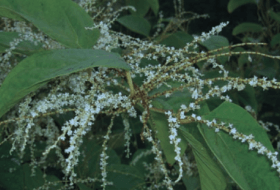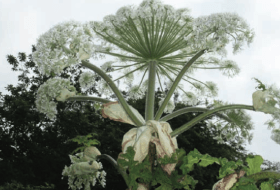Invasive weeds
Page updated on: 04/12/2023
Japanese Knotweed, giant hogweed and Himalayan balsam are invasive plants that you might come into contact with and they have the ability to spread and pose serious threats to biodiversity, the economy and human health.
These non-native plants threaten our biodiversity by crowding out native species and destabilising river banks. They can also cause damage to forestry, agriculture and infrastructure sectors. Japanese knotweed, for example, can grow through tarmac and can cause structural damage to property, whilst giant hogweed can cause severe blistering and skin irritation with just the slightest contact.
You have a responsibility to:
- prevent invasive, non-native plants on your land spreading into the wild and causing a nuisance
- prevent harmful weeds on your land spreading onto a neighbour’s property
It is important that you can identify them so you can control them in the most appropriate way. The guides below have been produced to help you identify these plants and advise on how they should be treated.



